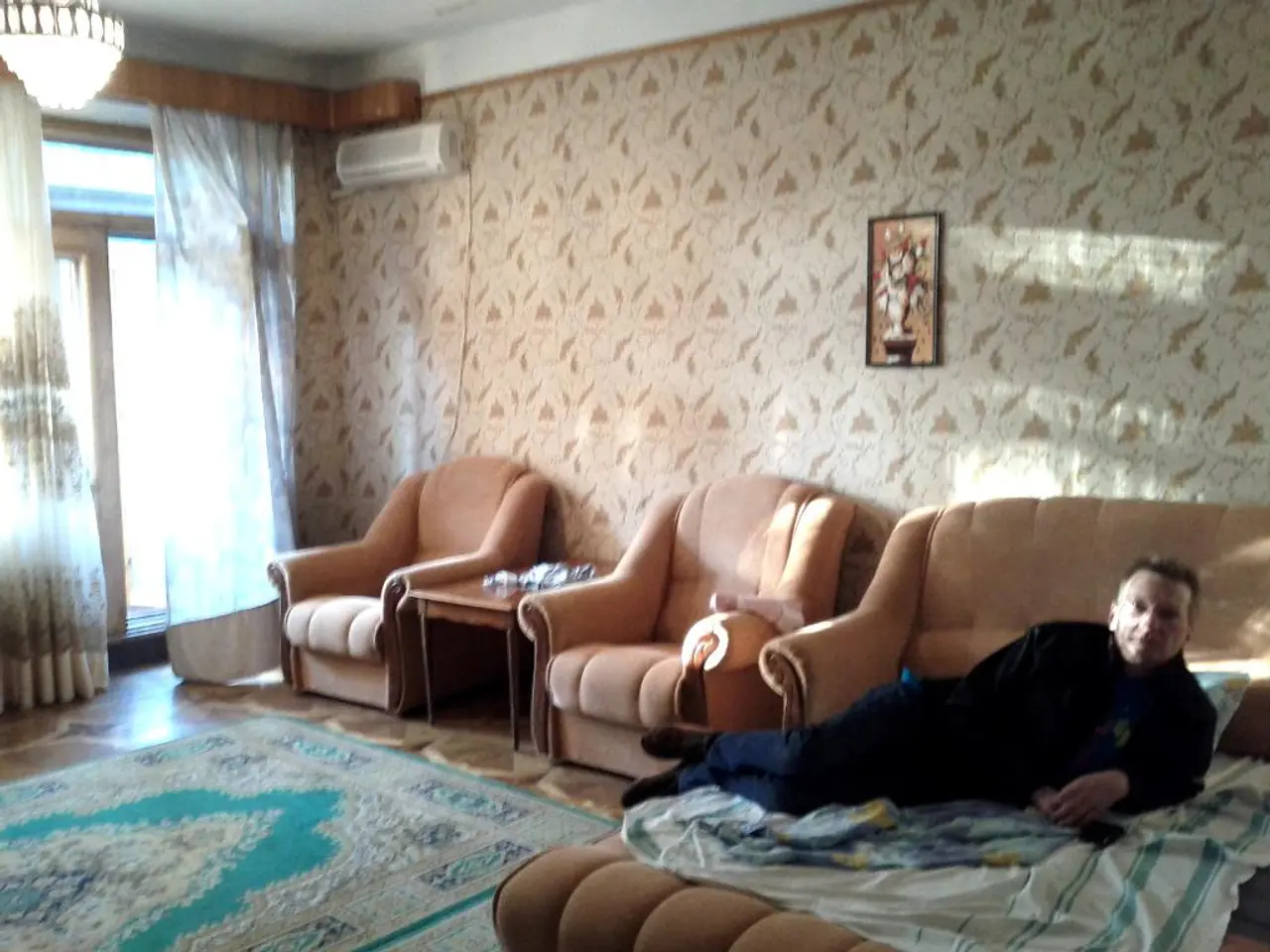Enhancing Home Ventilation Through Curtain, Furniture, and Room Design Adjustments
In our homes, the air we breathe can significantly impact our health and cognitive performance. Here are some strategies to enhance indoor air quality and create healthier living environments.
Firstly, regular vacuuming with a HEPA filter vacuum is crucial in preventing dust and grime from recirculating in the air.
Poor ventilation can lead to increased indoor pollutants, humidity levels, and even mold, contributing to respiratory problems and cognitive impairment. Interior design and furniture placement significantly influence home airflow and indoor air quality. Strategic placement of furniture can facilitate or obstruct natural airflow pathways, impacting ventilation efficiency and the distribution of fresh air within a space. For instance, avoiding large pieces that block windows or vents helps maintain unobstructed air circulation.
Ceiling height and room volume also affect air movement. Vaulted ceilings and higher rooms enhance air circulation and comfort by allowing warm air to rise away from occupants, reducing stuffiness. Incorporating features like operable windows and open layouts in interior design promotes natural ventilation, which improves indoor air quality by exchanging stale indoor air with fresh outdoor air without heavily relying on mechanical systems.
The placement of devices like humidifiers is also key. Positioning a humidifier centrally and away from corners ensures even moisture distribution, preventing damp spots that could foster mold growth and negatively impact air quality. Using materials such as low-VOC paints and sustainable furnishings further reduces indoor pollutants.
Good indoor air quality has been linked to improved health and cognitive performance. Individuals in well-ventilated workspaces with lower CO2 levels scored 61% better on cognitive tests compared to those in poorly ventilated environments.
Open paths promote cross-ventilation, a process in which air enters from one side and exits from the other, which is effective in increasing house airflow. Opening windows on opposing sides of a room or residence creates a natural cross-breeze for improved ventilation and comfort.
Selecting and maintaining the proper type of flooring can also help promote cleaner air and better circulation throughout your home. Consider breathable flooring alternatives like oak, bamboo, or cork to trap less air and allergens and provide better heat regulation.
Creating open space around vents, radiators, and windows promotes greater air dispersion, increases circulation to upper levels, and reduces the demand on your system, saving both energy and money. Good circulation enhances indoor air quality, regulates humidity, and lowers allergies and contaminants.
Lifting and shaking rugs outside on occasion to remove dust and allergens is also beneficial. Positioning curtains to enhance rather than block airflow is important. This can be achieved by using curtain tiebacks, mounting rods a few inches wider than the window, and avoiding covering floor vents.
Blocked vents can reduce HVAC efficiency by more than 25%, causing the system to work harder and increase energy costs. A well-ventilated house can lower humidity and reduce allergens and dust that accumulate in stagnant air.
Open layouts with minimal obstruction can significantly enhance air velocity and dispersion. Arranging large furniture pieces 6-12 inches away from walls allows air to move behind and around them.
By implementing these strategies, we can create homes that not only look great but also provide cleaner, healthier air for us to breathe.
- Maintaining open space around windows, vents, and radiators can increase air dispersion, enhance indoor air quality, and reduce energy costs.
- Strategic placement of curtains to promote airflow rather than block it can improve ventilation in a home.
- Incorporating fitness-and-exercise, health-and-wellness, and lifestyle practices, such as regular vacuuming with a HEPA filter and open paths for cross-ventilation, can significantly impact household management and contribute to creating healthier living environments.




